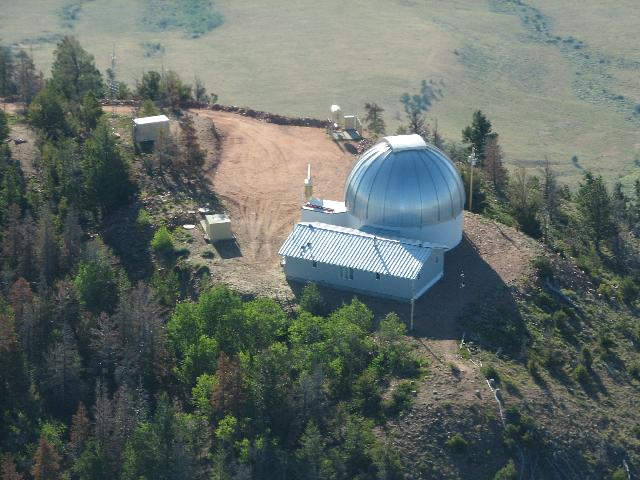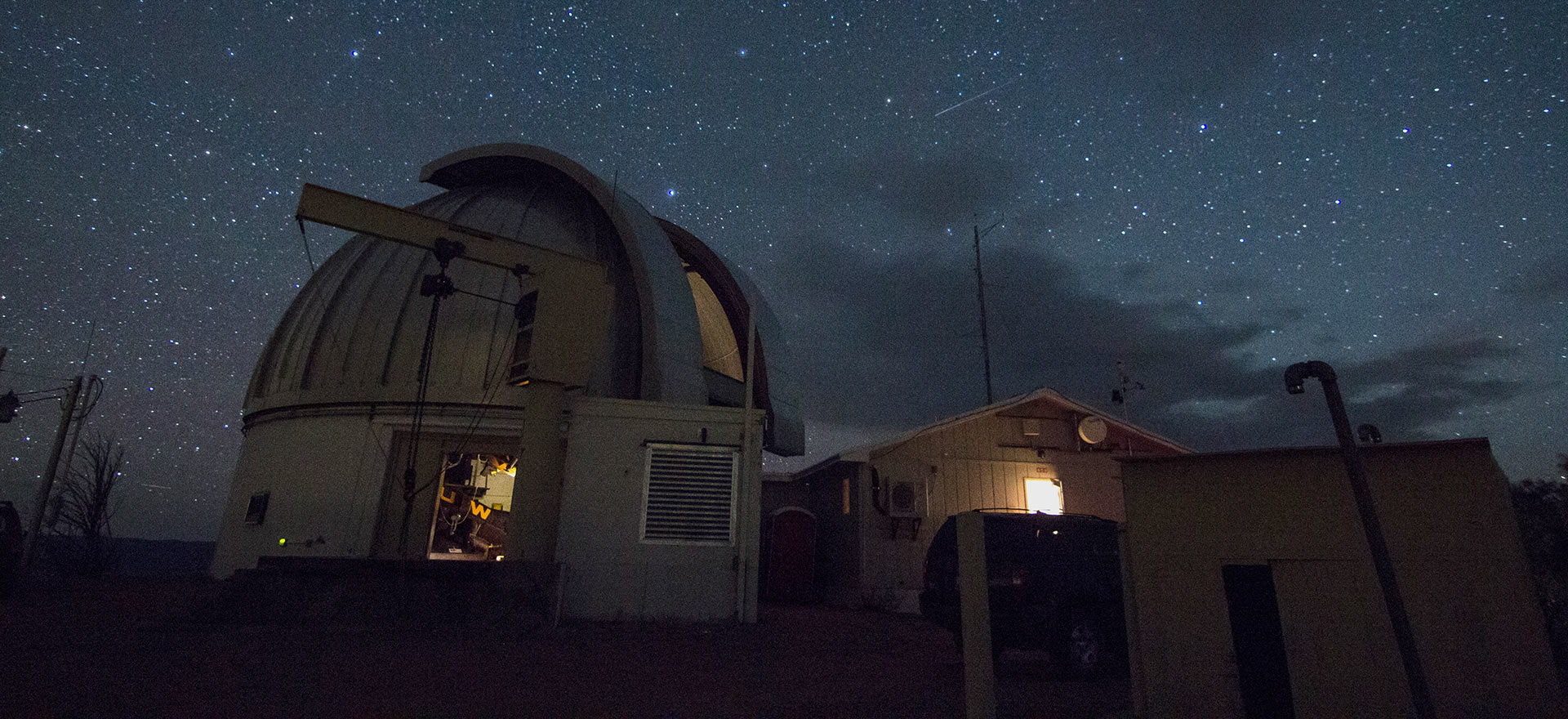
The Wyoming Infrared Observatory (WIRO)
WIRO OPEN HOUSE 2024 Friday October 25, 6-9pm. Reservations required. To get reservations and logistical details, email physics@uwyo.edu. We look forward to seeing you join us.
The University of Wyoming’s 2.3-meter telescope is located at the Wyoming Infrared Observatory (WIRO) about 25 miles southwest of Laramie, WY on the summit of Jelm Mt. and at an altitude of 9656 ft. (Elev.: 2943 m; Long: 105d 58m 35s.5 west; Lat: 41d 05m 49.4s). This site (469 Jelm Mtn. Road) was chosen because: (1) the dryness of the air, an important consideration for infrared astronomy since moisture strongly absorbs infrared radiation, (2) comparatively low turbulence in the air above the mountain, (3) a dark night sky, (4) close proximity to the University of Wyoming, and (5) pre-existing road, electricity and phone lines since Jelm was formerly used by the US Forest Service and BLM as a fire lookout station. The planning for WIRO began in the early 1970s. Funding for the facility was obtained in 1975 from the Wyoming State Legislature (contributing 60%) and from the National Science Foundation (40%). The total construction costs were nearly two million dollars. WIRO became operational in September of 1977 and it still ranks as one of the premier infrared observatories in the world. A narrated picture show by one of WIRO’s builders, Robert Gehrz, can be found here . A list of publications based on WIRO data is also available.
The weather on Jelm can be extreme Winter temperatures can drop below -40 F and wind speeds can occasionally exceed 100 mph. Snow covers the road from October until May and can limit travel on the mountain to Sno-Cats and ATVs. In the fall of 2014 it became possible to observe at WIRO remotely from the UW campus, and this capability is now in routine use.
Optical Design
The design of the WIRO 2.3 meter telescope is a classical Cassegrain . This includes a large, concave primary mirror with a parabolic surface and a smaller convex secondary mirror with a hyperbolic shape. This allows for two optical configurations. At the prime focus the light from a distant object is brought to a focus about 5 meters above the primary mirror’s surface. This is the location for the main imaging cameras for WIRO as it provides the largest field of view. In the Cassegrain configuration an 8″ diameter convex secondary mirror is placed in the converging beam to intercept the light before it reaches the prime focus and send it back down the length of the telescope and through a hole in the primary mirror to form a secondary image about 1 meter behind the primary mirror. This configuration provides a smaller field of view but a better imaging scale for smaller astronomical objects. In addition, the location of this secondary image allows for much larger instruments to be placed behind the primary mirror on the rear surface of the telescope structure. The secondary mirror can be “chopped” or wobbled under computer control to allow for rapid, alternating sampling of an astronomical object and the nearby, blank sky. This enables the most accurate measurements at mid-infrared wavelengths since at this wavelength the “dark” night sky is actually quite bright and variable.
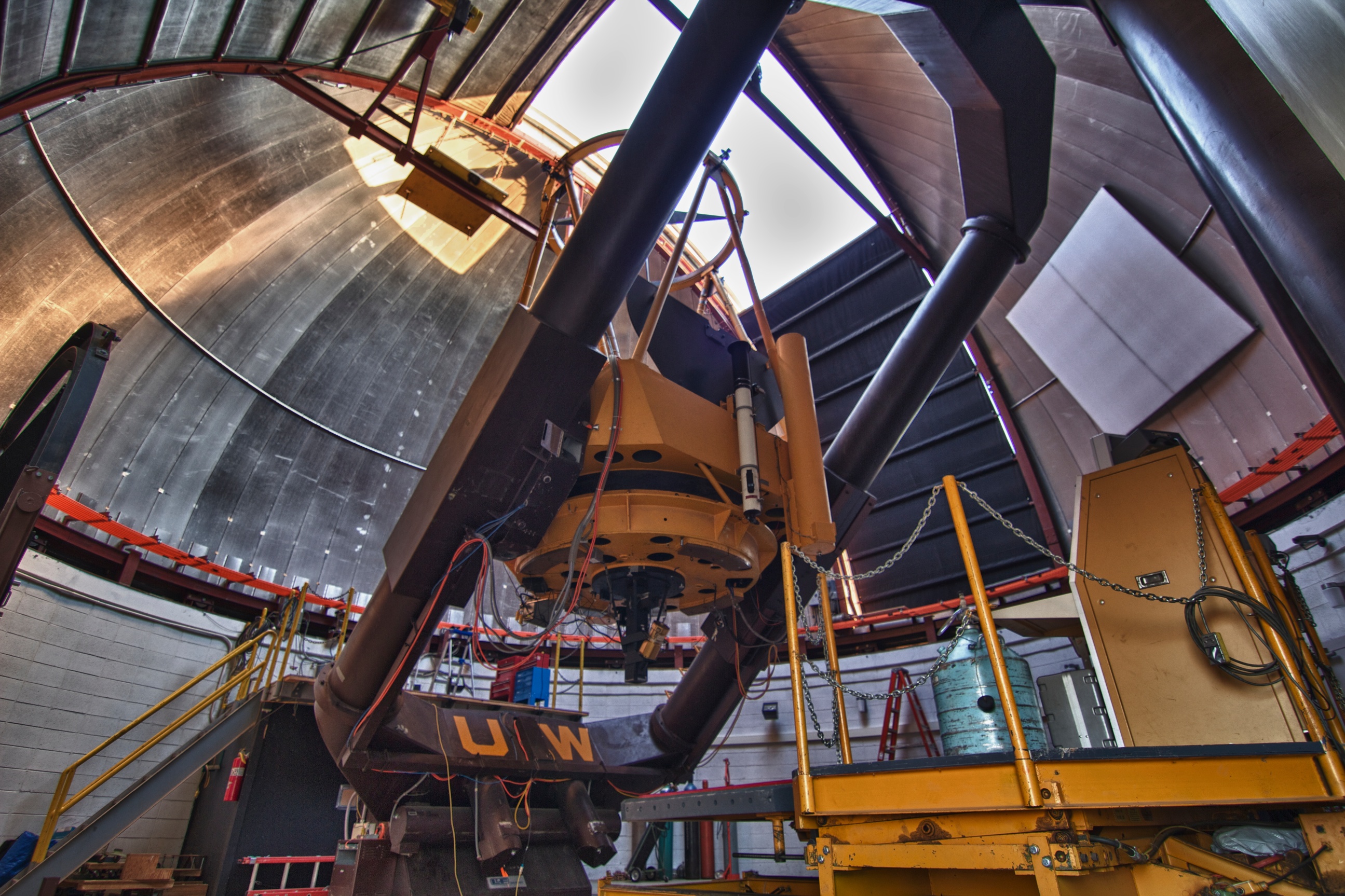
Telescope Structure and Dome Enclosure
The telescope needs to be precisely pointed and must track across the sky to follow the apparent motion of an object from East to West as the Earth rotates. The telescope mount was manufactured by L&F Industries of Huntington Park, CA at an original cost of nearly $700,000. The combined weight of the telescope and its mount is about 110,000 lbs. Of this, 60,000 lbs moves when the telescope is operated. However, the precise balancing of the telescope means that the 30 tons of moving mass can be moved with a 1/10 horsepower electric motor. The drive gears are machined to very close tolerances and are capable of positioning the telescope with an accuracy of 1/10 arcsecond (1/36,000 of a degree). The telescope is operated under computer control in order to model and correct for the flexure of the telescope structure as it is pointed toward different positions on the sky. The hemispherical dome, which shelters the telescope and its instrumentation, is 45 feet in diameter. The dome was designed and constructed by Observa-Dome Laboratories of Jackson, Mississippi. It features a 10-foot wide “slit” which can be opened for observations and rests on 18 rollers such that it can be driven by three 1 horsepower motors to follow the telescope as it points to various objects and tracks them across the sky. The telescope and instrument control room is located in an adjacent building to the telescope dome. This building also contains a small laboratory for instrument preparation and repair. The lab features a selection of tools and a turbofan vacuum pump for dewar and instrument maintenance. A small machine shop is also available for more serious repairs!
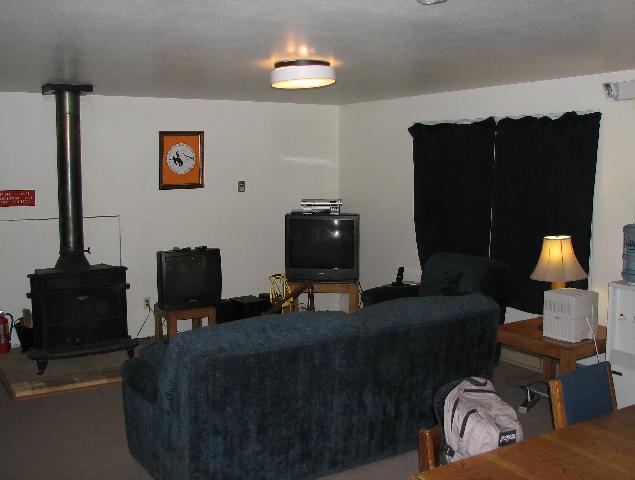
Living Facilities
Observers at the 2.3-meter telescope usually stay at WIRO while observing. The living facilities includes three dorm rooms(red, blue, yellow), a full-function kitchen, a bathroom, and a living room and the control room.
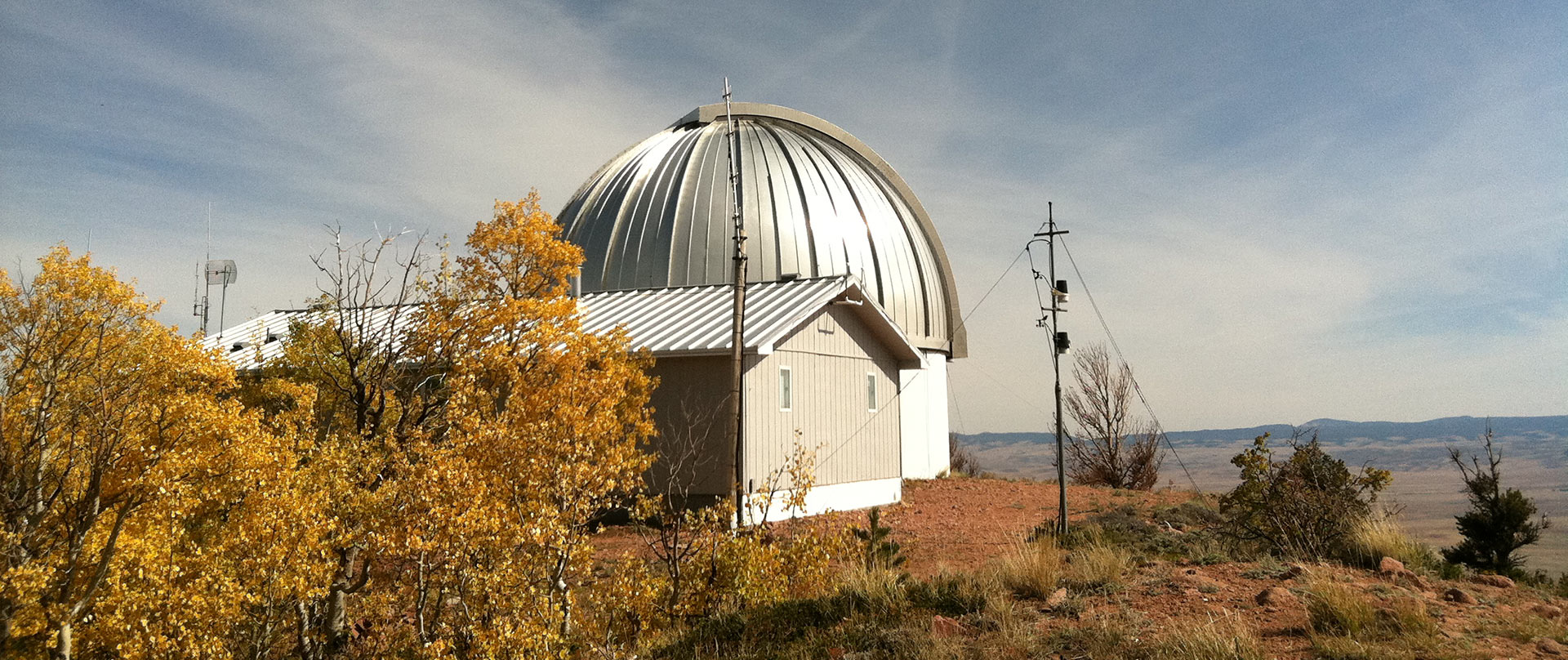
UW Observing Proposals for WIRO and APO
Due Apr 1 and Oct 1 to the WIRO director.
Proposal Form (Latex)
Proposal Style File (Latex)
APO observing proposal template
WIRO Observing Schedules
Period/Schedule
2022 Schedule
Observing at WIRO
As of 2017 most observing is done remotely from the UW campus. On-site observing is still conducted during summer months and as-needed for specific programs. Observing time is allocated on a quarterly basis to the faculty and students of the Department of Physics and Astronomy and qualified visitors. Scientists interested in obtaining observing time in the next quarter should submit a not to exceed 2 pages to the the WIRO director by the appropriate deadline. The schedules and proposal deadlines are below. If observing on-site November – April, please be advised that winter weather can be severe. A picture of suggested winter apparel can be found here.
Transportation to WIRO
Observers going to WIRO generally start from Laramie and leave town West on 230 toward the town of Woods Landing and then take 10 South towards the Colorado border. Located on the left after about five miles on 10 is the WIRO Cathouse and a 5.5 mile gravel road leading up the mountain. The road up the mountain is graded occasionally during the summer and is blocked by snow typically December-May. Maintenance vehicles are available to replenish the water supply, and transport heavy supplies to WIRO. During the snowy months a Tucker Sno-cat and a Polaris Ranger are available for transportation.
WIRO Weather
For Current WIRO weather check
AllSky Camera Images
IR Satellite Loop
Satellite
WIRO Clear Sky Clock
Cheyenne radar
WIRO Weather Station (not accessible off campus)
WIRO logged weather reports
WIRO backup weather station
WIRO Instruments
- WIRO DoublePrime (WIRO”): A 4k wide-field prime-focus camera with 40′ FOV (new in 2014)
- FHIRE-Fiber HI-Resolution Echelle: FHIRE, a precision radial velocity spectrograph
- WIRO-Long Slit: WIRO Longslit spectrograph
- (obsolete) WIRO-Spec:an integral-field, holographic phase spectrograph (no longer available)
- (obsolete) WIRO-Prime: a prime-focus imaging camera
- OptiPol: an optical polarimeter on long-term loan from UMN
Report Forms (password required)
- Priority Email Notifications
- Nightly Reports
- Service/Maintenance Reports
(Password required)
